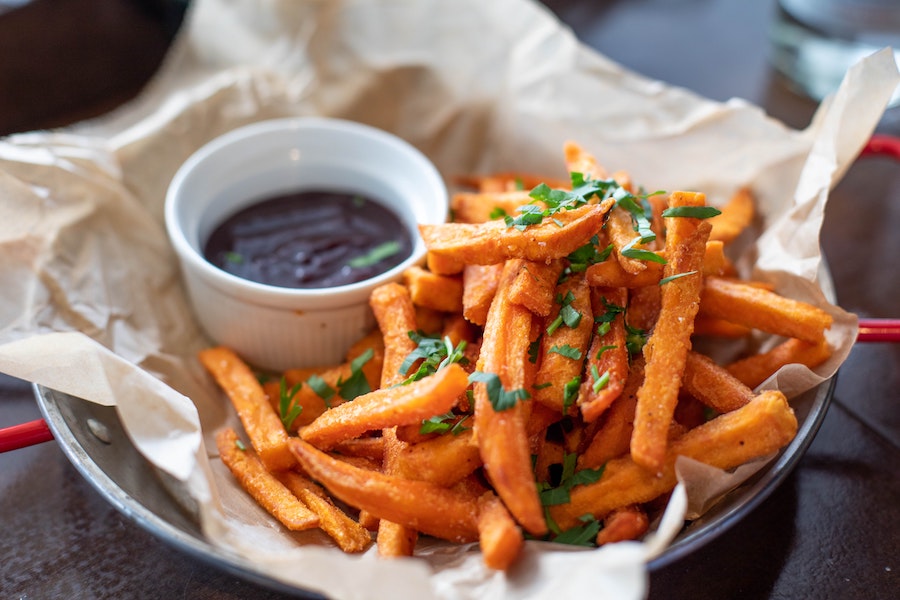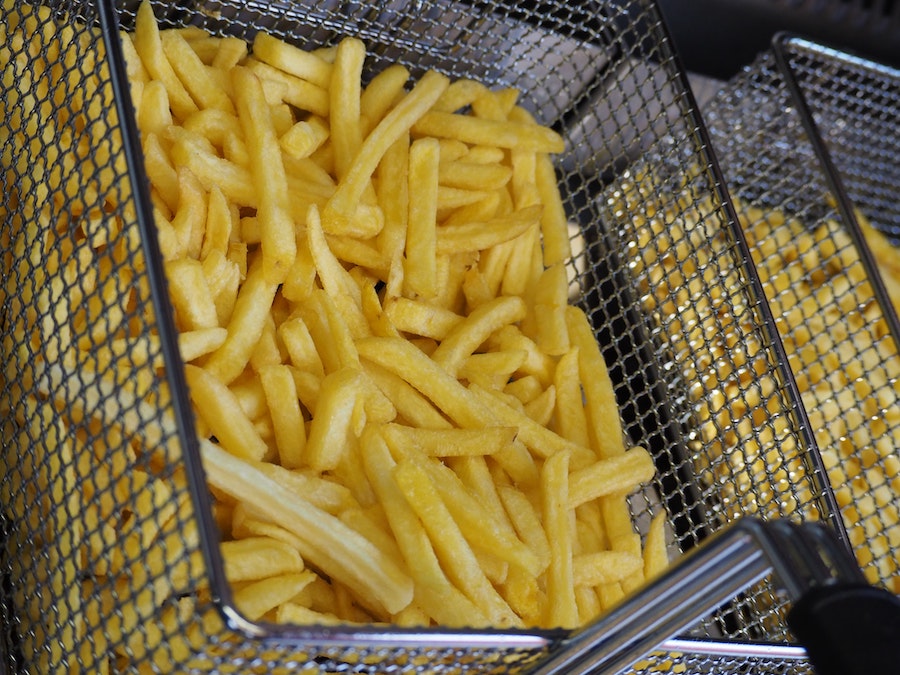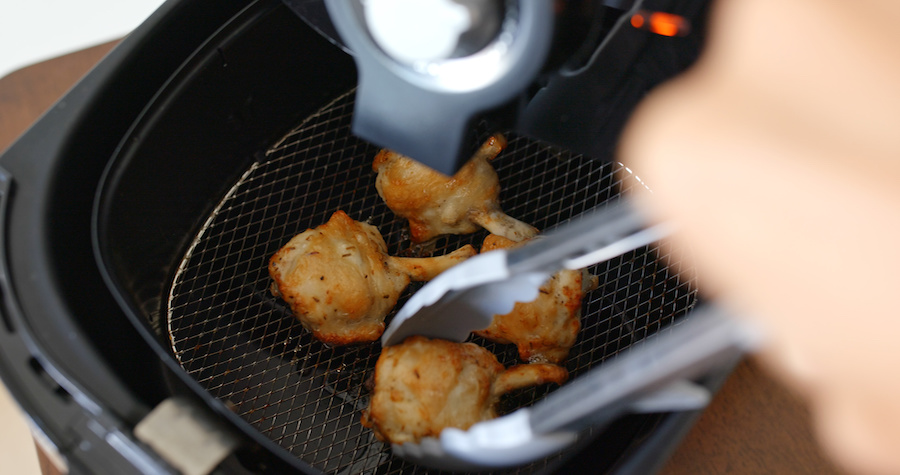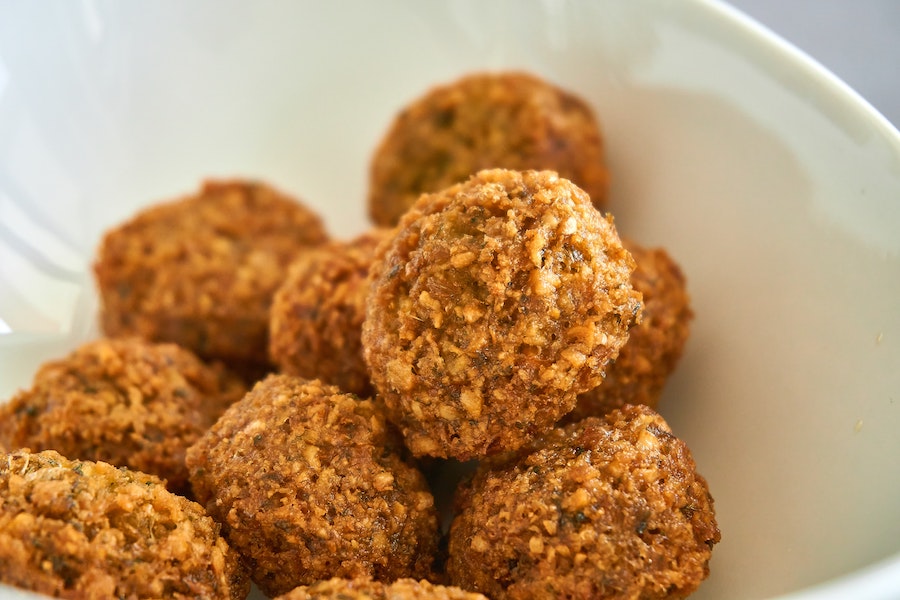
Our fascination with crispy food started way back in time — We have two main sources of crispy in our natural environment: insects and certain parts of plants such as roots, leaves, and stalks.
In modern times, now that we know how to cook, our love for crispy food has evolved into a whole array of methods and ingredients.
To help you make your crispy dreams come true, listed below are some of the methods used to make crispy dishes, and some tips on how to do them correctly:
Deep-Frying

Deep-frying is a cooking method that uses fat or oil to cook and bring out the crispiness of a piece of food. However, it has recently created fear in some of the home cooks — not only because of the fear of getting burned by hot oil, but also because fried foods are known to be greasy and unhealthy.
Despite these consequences, many people are still fond of eating deep-fried food, for they are crispy and satisfyingly awesome. We’re also behind the idea of balance. Even deep-fried foods, once in a while and with moderation, will not create any significant issues in our health.
Deep-frying works by wholly submerging food in hot oil (up to 400°F (204°C). The bubbles around the food are the moisture on its surface that turned into steam. This process allows the formation of crust.
The more starchy the surface is, the crispier it gets. That’s why we often use cornstarch or flour.
To prevent your fried food from getting soggy, keep them as dry as possible before cooking, because the oil migrates inwards when moisture moves out. Generally, the amount of oil absorbed is equal to the amount of water removed while frying.
Here are some tips to consider when deep-frying:
-
Using the right equipment.
Cast irons with wide bases are best to use. They’re sturdy and heavy which can prevent accidents. Cast irons are also good at holding heat.
A drop in temperature while deep-frying may lead to a disappointing result. This is why we advice you to use a food thermometer with a probe that you can keep in the pan to easily and consistently monitor the temperature.
-
Be safe.
To prevent oil from overflowing, fill your pot with only two-thirds of oil. Make sure to always keep the pot’s lid within your reach for easy access whenever you need it.
Also, keep your food dry before dropping it in hot oil, not only to prevent oil absorption but to avoid oil from splattering due to the presence of water.
-
Choosing the right oil.
The oil you use affects the overall taste of your dish. Choosing a type of oil depends on your preference, whether you like a nutty, floral, or neutral flavor.
Aside from the taste, always consider the smoking point of the oil. Once the oil reaches its smoking point, it can give your food a burnt taste.
When deep-frying, choose oils like peanut oil, refined coconut oil, virgin or extra light olive oil and vegetable oil since their smoking point reaches higher than 375 °F, allowing you to fry better.
-
Cook in batches.
Cooking everything at once will cause a drop in oil temperature, which will make your food soggy. To prevent this, always cook in smaller quantities that you can control.
-
Avoid using salt before cooking.
Unlike other frying methods or grilling, where you can sprinkle your food with some salt before cooking, when it comes to deep-frying it better to avoid this. Salt may cause the hot oil to splatter even before the oil reaches its smoking point.
However, you can sprinkle some salt right after cooking so it will stick onto your food well.
Air Frying

Due to technological advancements, we’re able to get a similar feel to deep frying without the use of heavy oils and potentially dangerous techniques. One of these advancements is the air fryer. We run this website almost entirely on our love for Air Frying, isn’t this great?
An air fryer is a piece of kitchen equipment similar to an oven, but they differ in heating elements. Unlike ovens, an air fryer’s heating component is placed on the top, and is accompanied by a large and powerful fan for heat circulation.
As a result, the food easily becomes super crispy without using much oil. Some recipes don’t need any oil, some call for 1-2 teaspoons, and breaded items need 1-2 tablespoons – which is somehow healthier, as some would say. Either way, we absolutely love air frying.
An advantage of Air Fryers is that there are many accessories in the market that allow us to further decrease the use of oils, butter and other breading or non-stick elements. A great example of these accessories are the ones found in our online store.

If you’re new to air frying, or you’d like to know how to make your food even crispier, here are some air frying tips to help you:
-
Preheat your air fryer.
Before air frying, make sure to set the temperature of your air fryer to what your recipe calls. Preheating heats up the cooking surface and the basket to allow airflow at the right temperature, resulting in an evenly crispy air fried dish.
-
Do not overcrowd your basket.
An overcrowded basket may result in unevenly cooked food. You must give your food enough space for proper hot air circulation.
A great tip for cooking more food without overcrowding your basket is to use an air fryer rack like these ones. And if your air fryer basket has enough space, some racks can be stacked up to create an even bigger cooking surface, which allows you to place more food inside your basket without overcrowding.
-
Shake your basket.
One trick to give you an evenly crispy dish is to pause every few minutes to give your basket a gentle shake to re-distribute your food.
-
Spray with oil.
If you want to make the food brown and crispier, a spritz of oil halfway through the cooking time would help.
Extra tips for a crispy dish:

-
Befriend cornstarch
Since cornstarch is starchier than flour, using it to coat your fried food will give it great crunchiness and golden color.
You can use a 50-50 portion of flour and cornstarch to level up the crunch of your favorite fried chicken recipe or stick to cornstarch alone for an ultimate level of crispiness.
You could also use Panko crumbs when applicable to give your food a nice crisp.
-
Fry and fry again
While other people are not into deep-frying, some tend to double fry their food to make it much crispier.
Frying is a method of dehydration, which happens by letting the water on the surface and even inside the food evaporate. With this, the drier the food is before frying, the crispier its crust gets as less water has to be evaporated.
Meaning, when you fry your food again, it will become crunchier. You can also try to pat off or strain the excess oil after your first fry to prevent it from getting soggy. However, if you’re going to double fry, make sure the inside of your food is not going to be overcooked, dry or burnt.
-
You can always use your oven.
If you don’t want too much oil or you don’t want to buy an air fryer (but why wouldn’t you?) you can always use your oven.
The trick is to use an oven-safe rack to elevate your food. Through this method, the moisture can drip off while cooking, and air will be circulating, which may result in an evenly cooked and crispy dish.